M. Omair Ahmad
Senior Member, IEEE
ECG-EmotionNet: Nested Mixture of Expert (NMoE) Adaptation of ECG-Foundation Model for Driver Emotion Recognition
Mar 03, 2025Abstract:Driver emotion recognition plays a crucial role in driver monitoring systems, enhancing human-autonomy interactions and the trustworthiness of Autonomous Driving (AD). Various physiological and behavioural modalities have been explored for this purpose, with Electrocardiogram (ECG) emerging as a standout choice for real-time emotion monitoring, particularly in dynamic and unpredictable driving conditions. Existing methods, however, often rely on multi-channel ECG signals recorded under static conditions, limiting their applicability in real-world dynamic driving scenarios. To address this limitation, the paper introduces ECG-EmotionNet, a novel architecture designed specifically for emotion recognition in dynamic driving environments. ECG-EmotionNet is constructed by adapting a recently introduced ECG Foundation Model (FM) and uniquely employs single-channel ECG signals, ensuring both robust generalizability and computational efficiency. Unlike conventional adaptation methods such as full fine-tuning, linear probing, or low-rank adaptation, we propose an intuitively pleasing alternative, referred to as the nested Mixture of Experts (MoE) adaptation. More precisely, each transformer layer of the underlying FM is treated as a separate expert, with embeddings extracted from these experts fused using trainable weights within a gating mechanism. This approach enhances the representation of both global and local ECG features, leading to a 6% improvement in accuracy and a 7% increase in the F1 score, all while maintaining computational efficiency. The effectiveness of the proposed ECG-EmotionNet architecture is evaluated using a recently introduced and challenging driver emotion monitoring dataset.
PathoWAve: A Deep Learning-based Weight Averaging Method for Improving Domain Generalization in Histopathology Images
Jun 21, 2024Abstract:Recent advancements in deep learning (DL) have significantly advanced medical image analysis. In the field of medical image processing, particularly in histopathology image analysis, the variation in staining protocols and differences in scanners present significant domain shift challenges, undermine the generalization capabilities of models to the data from unseen domains, prompting the need for effective domain generalization (DG) strategies to improve the consistency and reliability of automated cancer detection tools in diagnostic decision-making. In this paper, we introduce Pathology Weight Averaging (PathoWAve), a multi-source DG strategy for addressing domain shift phenomenon of DL models in histopathology image analysis. Integrating specific weight averaging technique with parallel training trajectories and a strategically combination of regular augmentations with histopathology-specific data augmentation methods, PathoWAve enables a comprehensive exploration and precise convergence within the loss landscape. This method significantly enhanced generalization capabilities of DL models across new, unseen histopathology domains. To the best of our knowledge, PathoWAve is the first proposed weight averaging method for DG in histopathology image analysis. Our quantitative results on Camelyon17 WILDS dataset demonstrate PathoWAve's superiority over previous proposed methods to tackle the domain shift phenomenon in histopathology image processing. Our code is available at \url{https://github.com/ParastooSotoudeh/PathoWAve}.
Improvising Age Verification Technologies in Canada: Technical, Regulatory and Social Dynamics
Feb 16, 2024
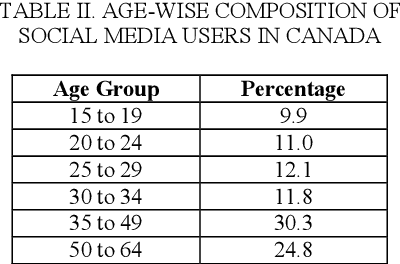
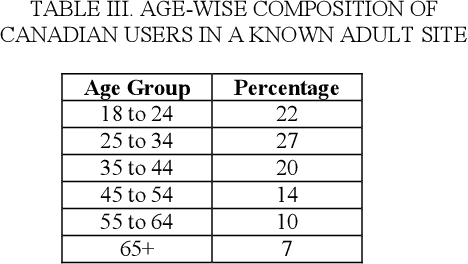
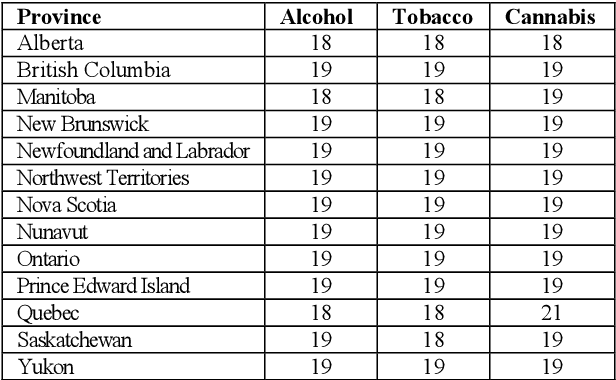
Abstract:Age verification, which is a mandatory legal requirement for delivering certain age-appropriate services or products, has recently been emphasized around the globe to ensure online safety for children. The rapid advancement of artificial intelligence has facilitated the recent development of some cutting-edge age-verification technologies, particularly using biometrics. However, successful deployment and mass acceptance of these technologies are significantly dependent on the corresponding socio-economic and regulatory context. This paper reviews such key dynamics for improvising age-verification technologies in Canada. It is particularly essential for such technologies to be inclusive, transparent, adaptable, privacy-preserving, and secure. Effective collaboration between academia, government, and industry entities can help to meet the growing demands for age-verification services in Canada while maintaining a user-centric approach.
DiffeoRaptor: Diffeomorphic Inter-modal Image Registration using RaPTOR
Sep 12, 2022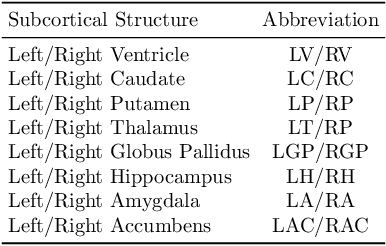
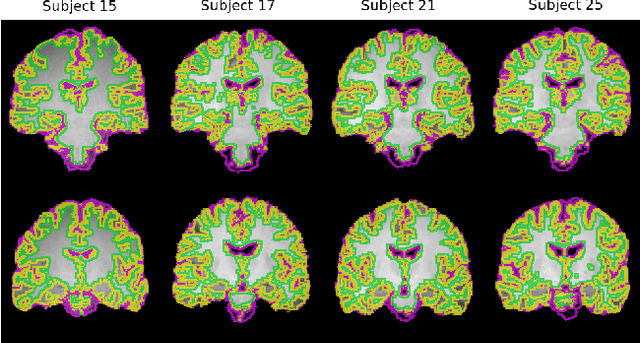


Abstract:Purpose: Diffeomorphic image registration is essential in many medical imaging applications. Several registration algorithms of such type have been proposed, but primarily for intra-contrast alignment. Currently, efficient inter-modal/contrast diffeomorphic registration, which is vital in numerous applications, remains a challenging task. Methods: We proposed a novel inter-modal/contrast registration algorithm that leverages Robust PaTch-based cOrrelation Ratio (RaPTOR) metric to allow inter-modal/contrast image alignment and bandlimited geodesic shooting demonstrated in Fourier Approximated Lie Algebras (FLASH) algorithm for fast diffeomorphic registration. Results: The proposed algorithm, named DiffeoRaptor, was validated with three public databases for the tasks of brain and abdominal image registration while comparing the results against three state-of-the-art techniques, including FLASH, NiftyReg, and Symmetric image normalization (SyN). Conclusions: Our results demonstrated that DiffeoRaptor offered comparable or better registration performance in terms of registration accuracy. Moreover, DiffeoRaptor produces smoother deformations than SyN in inter-modal and contrast registration. The code for DiffeoRaptor is publicly available at https://github.com/nimamasoumi/DiffeoRaptor.
Multi-Site Infant Brain Segmentation Algorithms: The iSeg-2019 Challenge
Jul 11, 2020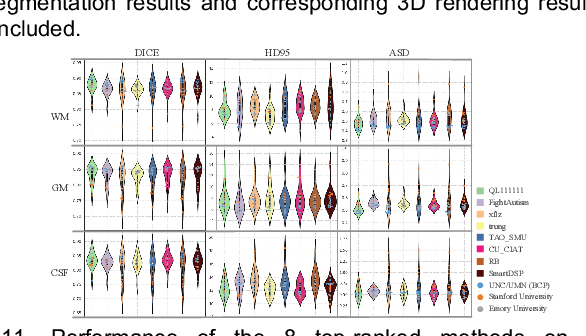
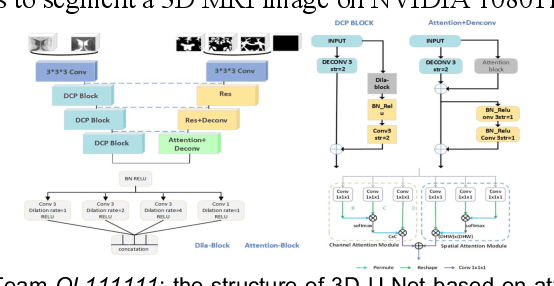
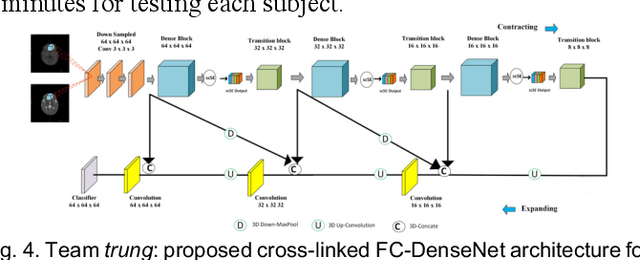
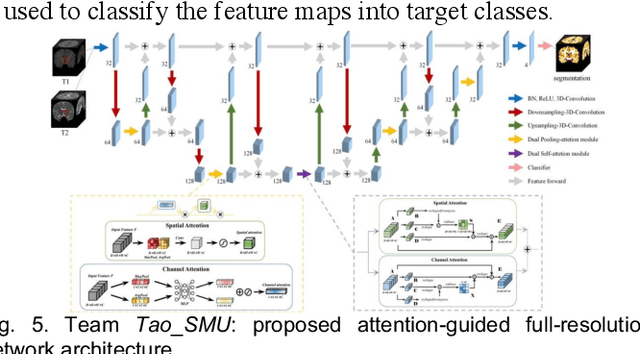
Abstract:To better understand early brain growth patterns in health and disorder, it is critical to accurately segment infant brain magnetic resonance (MR) images into white matter (WM), gray matter (GM), and cerebrospinal fluid (CSF). Deep learning-based methods have achieved state-of-the-art performance; however, one of major limitations is that the learning-based methods may suffer from the multi-site issue, that is, the models trained on a dataset from one site may not be applicable to the datasets acquired from other sites with different imaging protocols/scanners. To promote methodological development in the community, iSeg-2019 challenge (http://iseg2019.web.unc.edu) provides a set of 6-month infant subjects from multiple sites with different protocols/scanners for the participating methods. Training/validation subjects are from UNC (MAP) and testing subjects are from UNC/UMN (BCP), Stanford University, and Emory University. By the time of writing, there are 30 automatic segmentation methods participating in iSeg-2019. We review the 8 top-ranked teams by detailing their pipelines/implementations, presenting experimental results and evaluating performance in terms of the whole brain, regions of interest, and gyral landmark curves. We also discuss their limitations and possible future directions for the multi-site issue. We hope that the multi-site dataset in iSeg-2019 and this review article will attract more researchers on the multi-site issue.
Applying r-spatiogram in object tracking for occlusion handling
Mar 18, 2020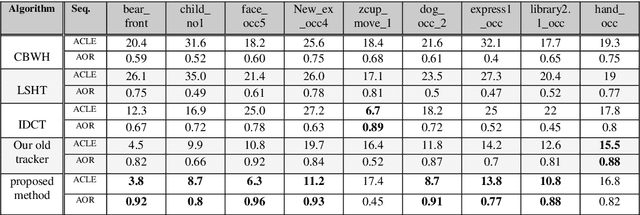
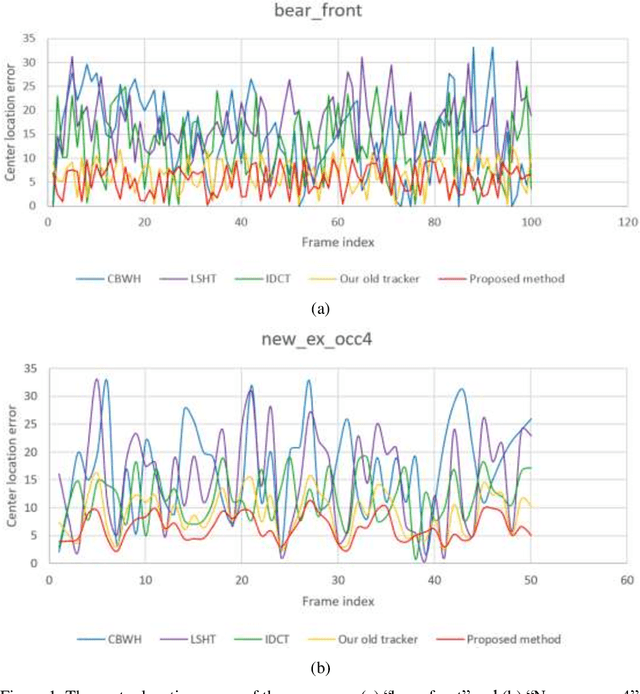
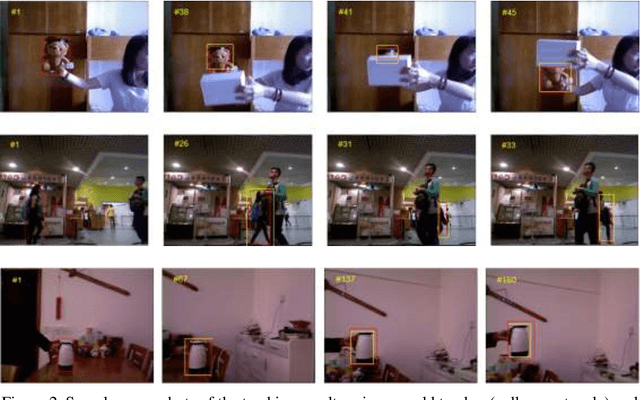
Abstract:Object tracking is one of the most important problems in computer vision. The aim of video tracking is to extract the trajectories of a target or object of interest, i.e. accurately locate a moving target in a video sequence and discriminate target from non-targets in the feature space of the sequence. So, feature descriptors can have significant effects on such discrimination. In this paper, we use the basic idea of many trackers which consists of three main components of the reference model, i.e., object modeling, object detection and localization, and model updating. However, there are major improvements in our system. Our forth component, occlusion handling, utilizes the r-spatiogram to detect the best target candidate. While spatiogram contains some moments upon the coordinates of the pixels, r-spatiogram computes region-based compactness on the distribution of the given feature in the image that captures richer features to represent the objects. The proposed research develops an efficient and robust way to keep tracking the object throughout video sequences in the presence of significant appearance variations and severe occlusions. The proposed method is evaluated on the Princeton RGBD tracking dataset considering sequences with different challenges and the obtained results demonstrate the effectiveness of the proposed method.
 Add to Chrome
Add to Chrome Add to Firefox
Add to Firefox Add to Edge
Add to Edge